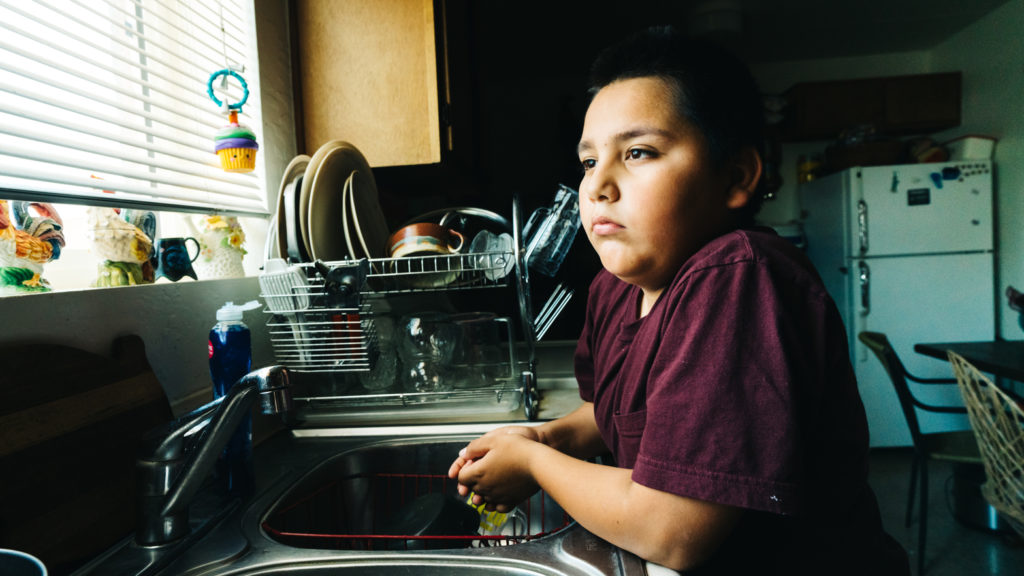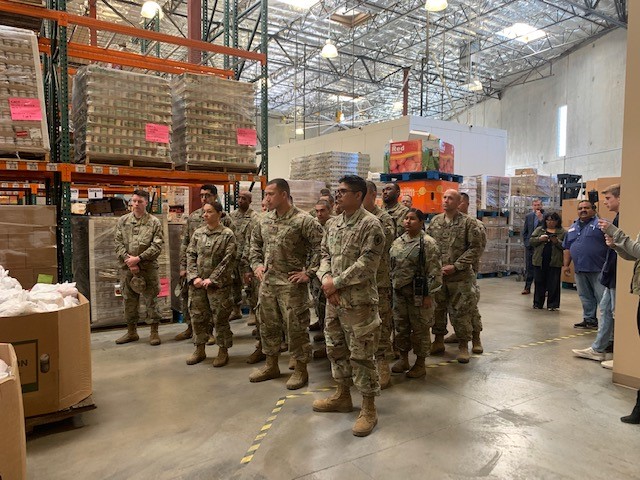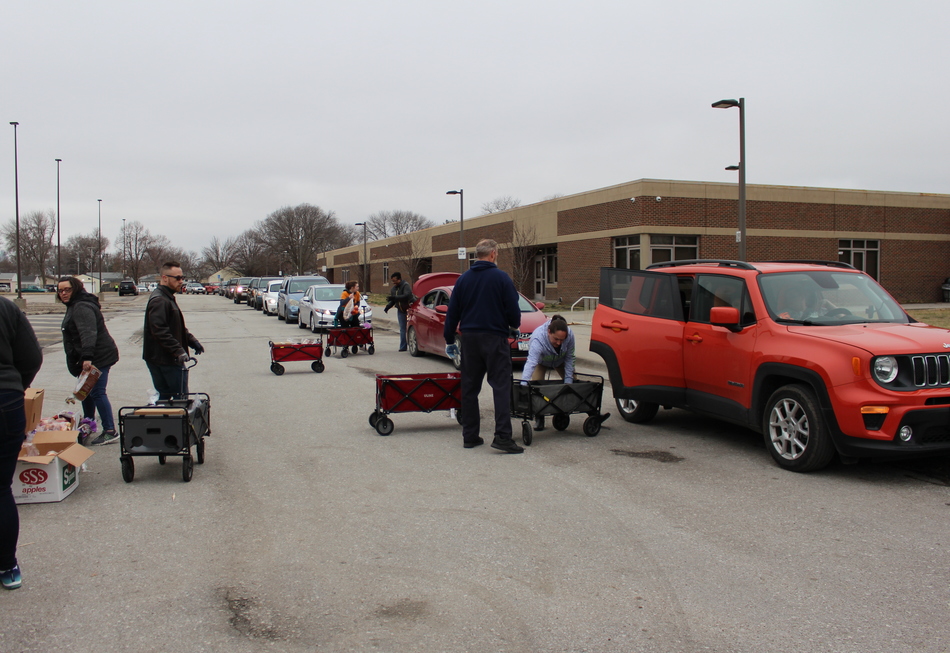Team Tony cultivates, curates and shares Tony Robbins’ stories and core principles, to help others achieve an extraordinary life.
The Front Lines of Hunger Relief
A MESSAGE FROM FEEDING AMERICA AND ITS COVID-19 RESPONSE
Written By: Katie Fitzgerald, Executive Vice President and Chief Operating Officer at Feeding America
“1,300 families received food yesterday; more than half were new recipients.” – Akron Community Food Bank, Akron, OH.
“Today we provided over 2,100 households with food boxes—four times more than normal.” – United Food Bank, Mesa, AZ.
These phrases, echoed by food banks across the country, give context to what’s happening on the front lines as people face hunger for the first time and food banks face new challenges to meet record-breaking demands.
Unlike Anything We’ve Seen in Food Banking
Feeding America is a network of 200 food banks and 60,000 food pantries and meal programs across the country. It is not an exaggeration to say that this pandemic is creating a food assistance emergency unlike anything we’ve ever seen in the 40-year life of food banking in the U.S. Our member food banks are hustling to get food to their communities. Recently, as 22 million people filed applications for unemployment benefits, 98% of our food banks reported an average 63% increase in the number of people that turned to them for emergency food assistance.
Families Face Reduced Incomes; Children Face Less Food
As businesses continue to close, more families are coping with financial hardship. The March 17 Marist poll tells us that nearly 1 in 5 households have experienced a layoff or reduction in work hours—resulting in a loss of income. Lost wages or sudden expenses due to illness are devastating millions of people in the U.S. who live paycheck to paycheck. Compounding this, according to the Federal Reserve, 40% of Americans do not have enough cash on hand to cover a $400 emergency expense.

And with the need for social distancing, kids are out of school and have lost access to free and reduced-price school meals as well as snacks from after-school programs. Across the country we have dire circumstances on our hands. The loss of income combined with the lack of access to school meals is having an astronomical impact on the families and children that we serve.When school is not in session, 22 million children lose access to free and reduced-price meals.
- When school is not in session, 22 million children lose access to free and reduced-price meals.
Food Donations Dried Up Overnight
For the emergency food assistance system, rapidly evolving changes have caused a severe disruption to our entire operating model. Traditionally, food banks rescue excess safe, healthy food from manufacturers, distributors, retailers, foodservice companies and farmers and distribute it through food pantries and meal programs to children, families and seniors who need it.
The Feeding America network provided 4.2 billion meals to neighbors in need last year alone. Now, because of consumer demand, 50% of the donated product we typically receive essentially disappeared overnight. Retail food donations—which make up more than a third of our organization’s food supply—are delayed or declining. Retailers have less inventory in stock, and therefore less inventory to donate. In practical terms, food banks are moving through their inventory faster than they can replace that inventory.
Dilemma: Higher Demand, Fewer Volunteers
Feeding America’s 2 million volunteers are the backbone of our network’s ability to provide food to 40 million people each year. In fact, over half of our partner food pantries and meal programs have no paid staff and rely solely on volunteers. Social distancing measures have resulted in a significant decline in our volunteers, especially for seniors who make up the majority of our volunteer base. The lack of volunteers means that some agencies have had to close.

Calling in the National Guard—To meet the growing demand to sort, stock, box and distribute food, many food banks are requesting help from their state’s National Guard. From California to Ohio to West Virginia, National Guard members are stepping in during this critical time to supplement the food bank staff and volunteer workforce. Their presence has proved vital in maintaining food bank operations and getting meals to people struggling with hunger. We are grateful for the National Guard’s support during this time and value their partnership as together we work to provide food to neighbors in need.
< National Guard members arrive at FIND Food Bank in California where the food bank has experienced a 70% reduction in volunteers due to shelter-in-place orders.
Innovation, Resilience and Gratitude
To implement health safety measures for food distributions, food banks and agencies have pivoted from congregate sites, such as food pantries or soup kitchens, to no-contact and low-contact distributions. They are scheduling pickup times to limit the number of people on-site at one time and creating drive through food pickups—where food is placed directly into cars, and grab-and-go pantries.
The following story came from one such distribution and was relayed to our staff by Ericka Smrcka, Director of Network and Client Services at Food Bank for the Heartland in Omaha, NE. It brings into focus the incredible mix of need, fear, resilience and gratitude we see on the front lines.
"I have never seen anything like this. We hosted a drive-up mobile distribution tonight at a site that normally sees much less than a hundred people. Over 400 cars showed up but we only had food for 200. People in cars for a quarter of a mile in all directions who had been waiting well over an hour.”


"I personally talked to so many families that we were not able to serve, passing out information about other resources. The response was overwhelmingly of thanks. After sitting in their cars for an hour and not receiving any food, they still said “thank you.” The man who got off work early, picked up his three daughters in car seats with their golden curls. The woman whose daughter ate rice for breakfast and lunch today. They said thank you for doing this for their city after only receiving a piece of paper with maybe a little bit of hope of another resource. People are scared but they are so appreciative of the work we’re doing."
To implement health safety measures, food banks across thecountry are implementing no-contact and low-contact food distributions.
How to Help People on the Front Lines of Hunger Relief
I would be remiss if I did not mention that the COVID-19 crisis comes on the shoulders of an existing crisis in our country: 37 million people—including 11 million children and 5.5 million seniors—are food insecure, meaning, they do not have regular access to enough food to live a healthy life. With recent events, the numbers are increasing dramatically. The good news is that we each can help, during this critical time and into the future.
If you have the financial resources, I ask that you consider donating to the 1 Billion Meals Challenge, Tony’s signature campaign in partnership with Feeding America. The Challenge aims to provide 1 billion meals by 2025 for people struggling with hunger. Now in its sixth year, the campaign has raised more than 517 million meals for people in need through the Feeding America network. As part of the Challenge, your donation can be matched, doubling its impact. Your support can help food banks respond to needs in communities throughout the U.S., providing hope and meals during these uncertain times.
You
can also use the power of social media to lend your voice to support
Feeding America and your local food bank. Share content from Feeding America’s social channels
— Facebook.com/FeedingAmerica,
Instagram.com/FeedingAmerica,
Twitter.com/FeedingAmerica
— where we frequently
share food banks’ responses to the crisis across the country.
On behalf of the Feeding America network and the
people we serve, thank you for your care for neighbors in need.
About the author:
As Executive Vice President and Chief Operating Officer, Katie Fitzgerald leads the implementation of Feeding America’s strategy, working hand in hand with member food banks and other key partners to advance an America where no one is hungry. In her role, Katie oversees and facilitates synergy among Feeding America’s Equity and Program, Supply Chain, Network Engagement, Research, and Strategic Partnership functions.


